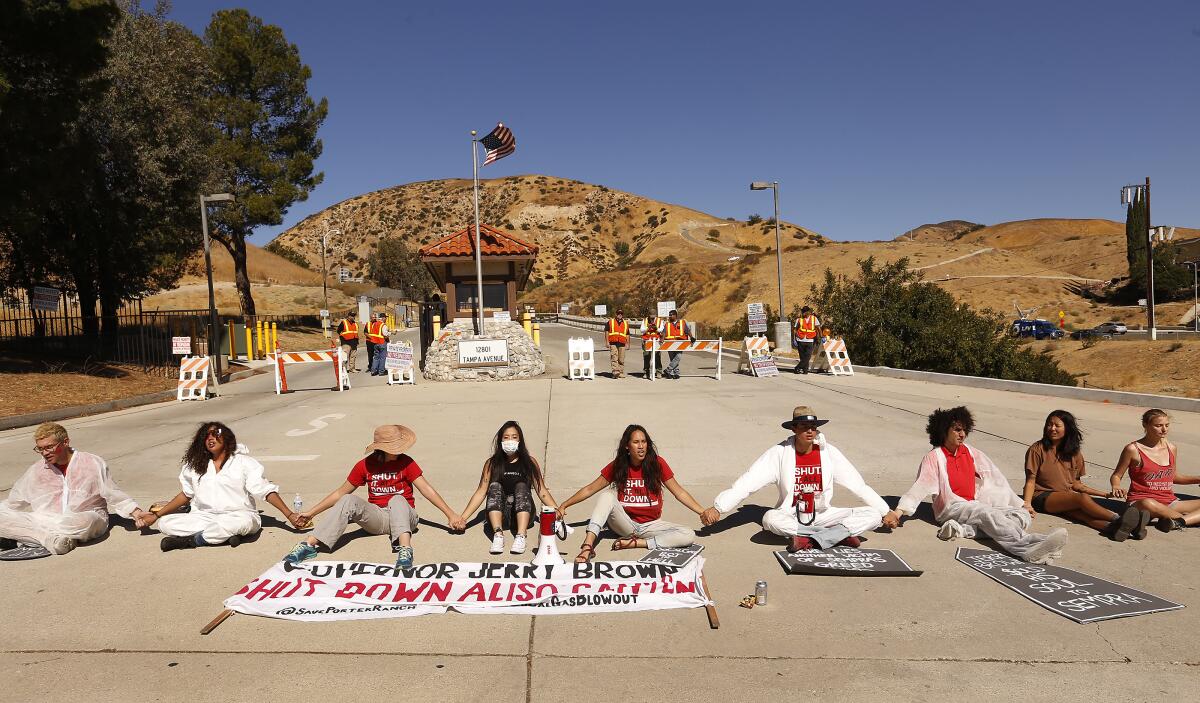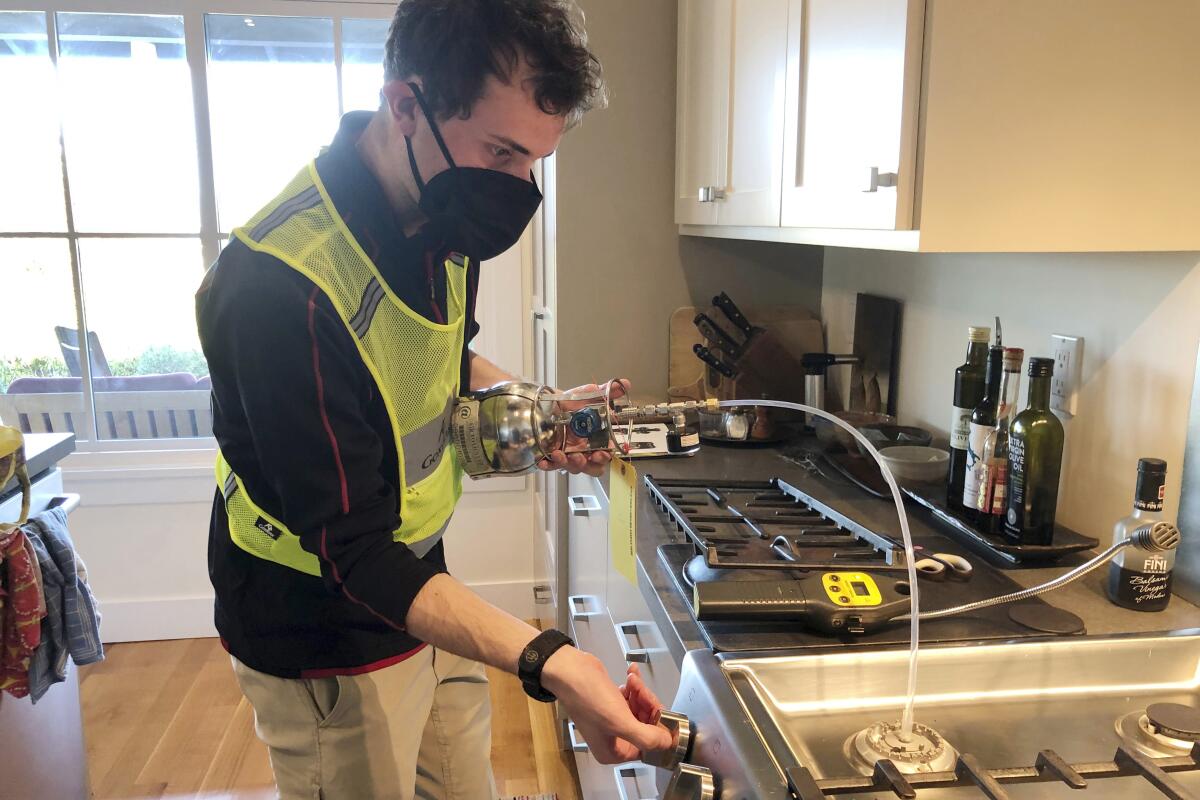Gov. Gavin Newsom has never hesitated to go to bat for electric vehicles.
Even as slowing sales growth and former President Trump¡¯s reelection have called into question the feasibility of California meeting its aggressive clean car targets ¡ª a topic The Times¡¯ Russ Mitchell explored in??¡ª Newsom has continued supporting EVs. Last week, his Public Utilities Commission approved??for EV charging stations and other clean transportation projects, Utility Dive¡¯s Robert Walton reports.
¡°With this investment, and the help of the private sector, we¡¯re building a bigger, better vehicle charging network that ensures Californians can reliably and affordably get where they¡¯re going,¡± Newsom said in a?.
It¡¯s important stuff. We need emission-free cars to cut air pollution and slow the climate crisis. And California has had great success: In the third quarter of this year,??sold in the state were zero-emission.
Still, I wonder: Why hasn¡¯t the governor dedicated the same political capital to electric heating and cooking? Why hasn¡¯t he fought as hard to get natural gas out of our homes as he has to get gasoline out of our cars?
To be clear, oil is a bigger contributor to climate change than natural gas. Transportation??39% of the state¡¯s heat-trapping carbon emissions last year, compared with 14% for residential and commercial buildings.
But as I?, Newsom has at times talked a big game on gas.
He pledged early in his first term that he would try to shut down Aliso Canyon ¡ª an L.A.-area facility that stores gas for use in homes, businesses and electric plants ¡ª bt 2027. Aliso sprang a record leak in 2015, spewing heat-trapping methane into the atmosphere and releasing toxic chemicals into L.A.¡¯s Porter Ranch neighborhood.
Despite Newsom¡¯s pledge, there¡¯s been little progress toward closing Aliso. The governor¡¯s appointees are slated to vote Thursday on a plan that would probably keep it open into the 2030s ¡ª with no clear closure timeline.
The problem isn¡¯t that Newsom has done nothing to help Californians ditch gas. Far from it.
When I asked Terrie Prosper, a spokesperson for the California Public Utilities Commission, what the agency has done to cut gas demand, she pointed to??that have collectively resulted in the approval of $168 million in incentives for 75,000 electric space-and-water heaters (with hundreds of millions of dollars more yet to be approved). She also noted that the commission??for new buildings that burn gas.
Newsom¡¯s appointees at the California Energy Commission have taken action too.
Although the agency hasn¡¯t banned gas hookups in new homes, disappointing activists, it??in September to adopt a new energy code that will incentivize builders to use electric space and water heating in single-family and low-rise multifamily homes starting in 2026. Another agency will probably vote to?the code this week.

Protesters stage a sit-in outside an entrance to the Aliso Canyon gas storage field in 2017. (Al Seib / Los Angeles Times)
In Southern California, meanwhile, a $71-million settlement between the state and Southern California Gas Co. ¡ª which owns and operates Aliso Canyon ¡ª should help some residents near the gas storage field go electric.
Forty million dollars will go toward $1,000 rebates for SoCalGas customers to buy heat pumps, with priority given to residents of Porter Ranch and surrounding neighborhoods, as The Times¡¯ Andrew J. Campa?.
¡°Thousands of dollars are now available for California homeowners to install heat pumps, making your home more energy-efficient and reducing your energy bills by hundreds of dollars each year,¡± Newsom said in a recent?, announcing federal funds from President Biden¡¯s Inflation Reduction Act. ¡°With these new rebates made possible by the Biden-Harris administration, Californians can save money and take real climate action.¡±
So it¡¯s not like Newsom has shied away from embracing electric appliances.
At the same time, he??to sign his electric car mandate. He hasn¡¯t done the same thing with an induction stove. He¡¯s called the Legislature into special session twice to fight?. He hasn¡¯t done anything of the sort to deal with?.
It¡¯s not hard to surmise there are political factors at play here.
Automakers have invested hundreds of billions of dollars in electric vehicles ¡ª and they want those investments to pay off. Newsom, with a presidential run always in mind, knows supporting EVs is a smart move politically. By contrast, there¡¯s no powerful, consolidated group of electric appliance companies. There¡¯s no Big Heat Pump, no Big Induction. The marketplace is growing but much more dispersed. The campaign funds are minimal.
Another political obstacle: The fossil-fuel industry has turned natural gas into a culture-war issue by bombarding Americans with the message that woke liberals are coming to take away their gas stoves and gas drilling jobs.
Last month, for instance, former Ohio Rep. Tim Ryan, a Democrat, claimed on MSNBC that Democrats lost votes in November because they were too ¡°moderate¡± on gas. The left-leaning network didn¡¯t tell viewers that Ryan is?, as Heated¡¯s Emily Atkin and Arielle Samuelson report.

Researcher Eric Lebel samples natural gas from a stove in Stanford, Calif., in 2021. Leaks from gas stoves can contribute to global warming and pollute the air in homes, scientists have found. (Rob Jackson)
What gas supporters can¡¯t achieve via that kind of messaging, they might accomplish in court.
This month, a self-described ¡°coalition of manufacturers, businesses, affordable housing interests, and workers¡±??Southern California¡¯s main air quality regulator over a rule requiring homes and businesses to replace more than 1 million gas appliances ¡ª including an estimated 700,000 pool heaters and 300,000 tankless water heaters, as my colleague Tony Briscoe??¡ª with electric appliances over the next three decades.
Trump¡¯s inauguration, just a month away, adds more uncertainty. The Trump administration could try to roll back federal incentives for home heat pumps and other electric appliances, as Akielly Hu?.
Will Newsom make phasing out gas appliances a bigger part of his climate platform as he prepares for a possible 2028 presidential run? Or will he stay focused on electric cars, knowing it¡¯s easier to rile people up about gasoline prices than about gas utility bills, and he¡¯ll win more friends promoting EVs than castigating gas stoves?
Probably the latter.
Then again, the environmental group Food and Water Action announced Monday that it¡¯s spending at least $100,000 to air TV and YouTube ads in four Democratic presidential primary states ¡ª Michigan, Nevada, New Hampshire and South Carolina ¡ª??for failing to close Aliso Canyon. It¡¯s an early attempt to make primary voters question whether Newsom is a true climate leader willing to take on Trump and fossil fuel companies.
Will the ad change Newsom¡¯s political calculus on Aliso? No idea.
But I do know this: The biggest barriers to climate action aren¡¯t economic or technological. They¡¯re political.
On that note, let¡¯s take a quick trip around the West:
THE ENERGY TRANSITION

President-elect Donald Trump talks with Elon Musk as he arrives to watch SpaceX¡¯s mega-rocket Starship lift off for a test flight in Boca Chica, Texas, on Nov. 19, 2024. (Brandon Bell / Associated Press)
Let¡¯s start with the big picture: California is already behind on its climate goals.
Per a new report, the state slashed its heat-trapping pollution by an average of?, KQED¡¯s Laura Klivans writes. That¡¯s real progress. But experts say the pace of reduction needs to accelerate to 4% annually through 2030 to meet the state¡¯s emissions target ¡ª and Trump will only make things harder.
Case in point: In a wide-ranging deregulation wish list, industry groups are urging Trump to resume natural gas exports, relax limits on soot pollution and ¡°forever¡± chemicals, pause implementation of worker heat protections and repeal coal- and gas-plant emission rules.??from my colleagues Susanne Rust and Ian James.
The U.S. Supreme Court might create challenges too:
- The justices have agreed to take up a case that could ultimately threaten California¡¯s authority to set its own auto-emissions rules,?. (David G. Savage, L.A. Times)
- Even liberal justices sound ready to?. (David G. Savage)
California can get in its own way too. The state¡¯s Air Resources Board says it??a landmark corporate climate disclosure law the first year it goes into effect, as Politico¡¯s Jordan Wolman reports.

Sign on the side of a Los Angeles Unified School District electric school bus. (Myung J. Chun / Los Angeles Times)
Before we get too down, some good news: California is getting $135 million from the Biden administration for electric school buses and trucks.?Some of the money is going to Los Angeles Unified School District, Oxnard School District and Oakland Unified School District, as?. In other good transit news, lower-income Californians can get $2,000 rebates on electric bikes. My colleague Karen Garcia?.
In less-good clean transportation news:
- Trump advisor Vivek Ramaswamy says it¡¯s??of federal funding for California¡¯s high-speed rail project ¡ª potentially imperiling the long-awaited bullet train. (Lucas Ropek, Gizmodo)
- Trucking companies are struggling to pay for electric big rigs. Meanwhile, low-income families living near heaving polluted SoCal and NorCal ports?. (Alejandra Reyes-Velarde, CalMatters)
Before we move on from energy, a few stories about solar development on public land in Nevada:
- Warren Buffett¡¯s NV Energy has proposed two huge transmission lines to accommodate solar farms.??show staff at the Bureau of Land Management, the agency tasked with approving or rejecting the power lines, ¡°chatting with NV Energy like close colleagues rather than arms-length regulators, and occasionally monitoring local opposition.¡± (Jimmy Tobias, Inside Climate News and Type Investigations)
- Environmentalists sued federal officials over their alleged?, saying solar farms, mining and oil and gas leasing threaten the historic trail. (Alan Halaly, Las Vegas Review-Journal)
WATER, WATER EVERYWHERE

Flooded farmland and small islands, located near the confluence of the Sacramento and San Joaquin rivers, are viewed from the air in May 2023 near Rio Vista, Calif. (George Rose / Getty Images)
In this week¡¯s biggest water news, Gov. Gavin Newsom secured $141 million from the Metropolitan Water District of Southern California for preliminary work on a giant Northern California water tunnel.?The vote was a resounding triumph for Newsom, with??The Times¡¯ Ian James reports.
Metropolitan also censured a board member for calling its Arab American chief of staff a ¡°camel jockey.¡±??The board member¡¯s use of the racist slur has complicated an investigation into the powerful agency¡¯s Arab American general manager, Adel Hagekhalil, whose extended leave of absence has environmental activists worried that Metropolitan is more inclined to support controversial infrastructure projects such as the tunnel.
Elsewhere in the Golden State:
- Low-income, Latino desert dwellers sick of inhaling harmful dust from the Salton Sea¡¯s drying lake bed want to see state officials turn a shoreline park into a?. (Rebecca Plevin, L.A. Times)
- Three years after a major sewage spill at L.A.¡¯s Hyperion wastewater treatment plant, neighboring residents are??¡ª and air quality violations are way up. (Grace Toohey, L.A. Times)
- In a win for the California Coastal Commission, an appeals court ruled the agency can??if their homes were built after 1977. (Paul Rogers, Bay Area News Group)
In other Western water news:
- Opposition from the Colorado River¡¯s Upper Basin states may stop Congress from approving a Lower Basin tribal water rights settlement?. (Debra Utacia Krol, Arizona Republic)
- Arizona is??over heavy groundwater pumping in a rural part of the state, arguing the firm is violating public nuisance law. (Gabriel Sandoval and Anita Snow, Associated Press)
- In 1987, Pacific Northwest officials set a goal to have 5 million salmon and steelhead return past Bonneville Dam by 2025. Right now, the 10-year average?. (Mia Maldonado, Idaho Capital Sun)
This is the latest edition of Boiling Point, a newsletter about climate change and the environment in the American West.?. Or open the newsletter in your web browser?.
For more climate and environment news, follow??on X and??on Bluesky.








